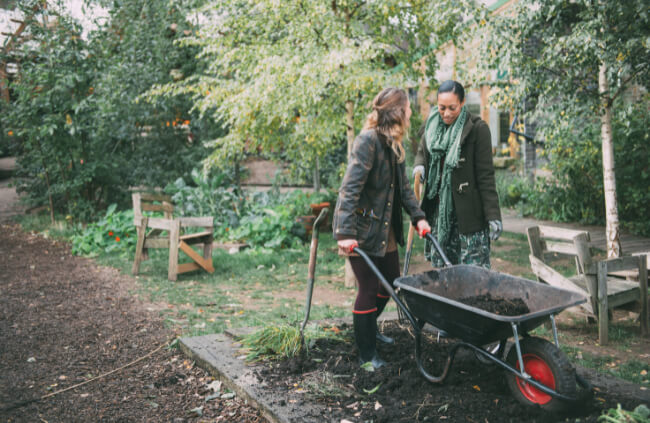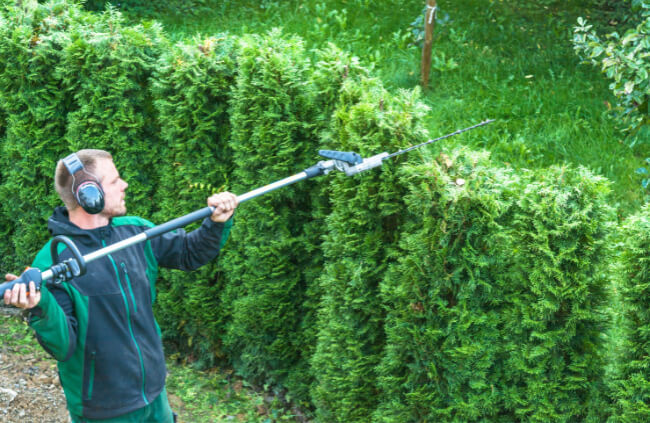As gardeners, we’re all happy to start with a blank canvas or at least a well-groomed garden. But where do you start with an overgrown garden? Do you simply order a bulldozer or bobcat for the day and stand back?
And as the dust settles reassess what’s left and start again? Or can some good come from a garden that’s been neglected? In many ways I think I would rather start with an overgrown garden than with a complete blank canvas.
More...
Sure, it takes more effort to get it back to some sense of way forward but just think of the discoveries you might make along the way. Trees that have been strangled by rampant creepers. Shrubs that haven’t flowered since Adam was a boy.
And possibly even a few bulbs springing into action now that they’re not competing with an overgrown lawn. So, where exactly should one start in revamping an overgrown garden?
Recovering an Overgrown garden

Step 1. Get All the Help You Need
Get or hire a mini skip, a mulcher and invite some friends over for a “Garden Party.”
The mini skip is to collect any broken, rusted and derelict features and any junk that can’t be recycled into the new landscape. However, don’t be too hasty in getting rid of these as you may find some will work really well in your new garden. Be creative.
The mulcher is to regenerate all your overgrown pruning into mulch, or the very least – the beginnings of a compost heap.
And the friends: as the saying goes, “Many hands make light work.” This is where your hospitality gift will shine as volunteers always love to be pampered with wonderful food and beverages. Tip: steer clear of the homebrew until the end of the day!
Step 2. Choose Where to Start
Choose a section of garden to start working on. The proverbial elephant can only be consumed by one bite at a time, so don’t try and chew through all the garden at once. Find a corner of an overgrown garden and start by ripping out anything that’s climbing through the rest of the foliage.
Overgrown ivy, clematis, honeysuckle – whatever is winding its way through the hidden trees and shrubs. If you can find the source of the creeper, even better! Prune it back to a small plant if you plan to keep it or just dig the whole root ball out and put it through the mulcher.
Next dig out any overgrown lawn and all the weeds that constrict the garden. This should bring you back to a blank soil canvas with just the shrubs, perennials and trees left.
Step 3. Pruning Overgrown Plants
If you can now distinguish between your plants, you can begin to prune them back to some semblance of shape. (See our product reviews for pruning shears, hedge shears, hedge trimmers, and garden loppers. A few tools you will surely need depending on how big your overgrown garden is.)
Overgrown trees can be pruned by removing any dead branches and removing any wasted boughs (those that grow directly into the neighbours’ fence) and those are competing for sunlight and space.
Your overgrown shrubs can be pruned back hard to allow new growth to start and any perennials that are left can be dressed up and pruned as needed.

Step 4. Start Planning and Organising Your Garden
Did you find any incredible plants that you didn’t know even existed in the overgrown bushes? The advantage of getting to this point rather than starting with a blank canvas is that you end up with all this great mulch and a selection of plants to start building your new garden around.
You can now begin to transplant some of the plants you want to keep and begin filling them out over time.
If you find some trees that you don’t like, or they won’t work in your new garden, try listing them in the classifieds or online. Many gardeners are willing to pay a small fortune for hard-to-get mature trees and palms.
Step 5. Enjoy Your Reclaimed Garden
All the major revamp is completed so it’s time to crack open the homebrew, wipe the sweat off your brow and start dreaming. What started as an overgrown mess is now ready to be painted with colour and texture.
One of the benefits of renovating an overgrown garden, especially from an investment viewpoint, is that most people are not willing to pay a premium for a rampant garden. They will, however, part with more if that garden is converted back to something of beauty.
Take a second look at that overgrown garden. It might actually be worth the effort.
Published on June 4, 2023 by Gary Clarke
Last Updated on October 25, 2023




